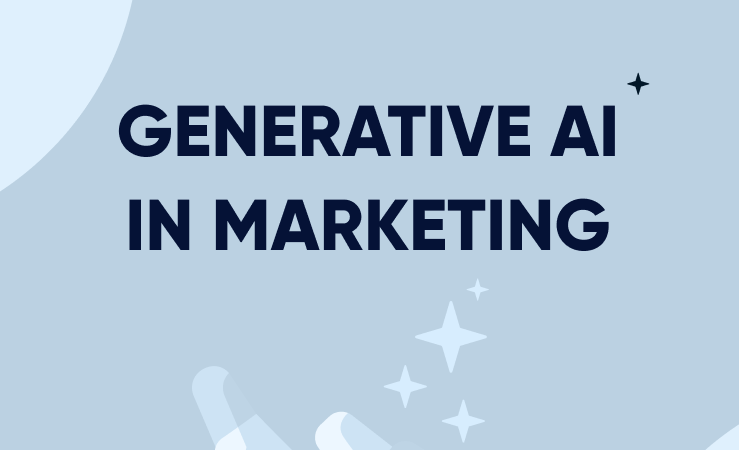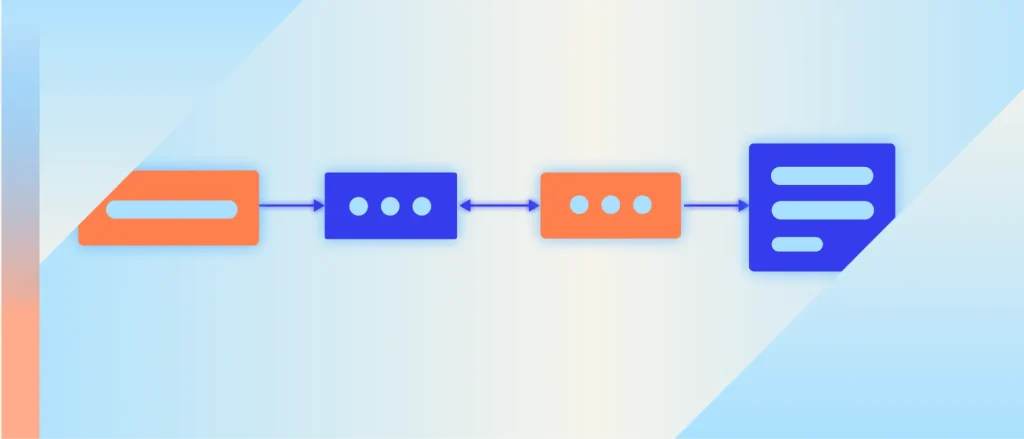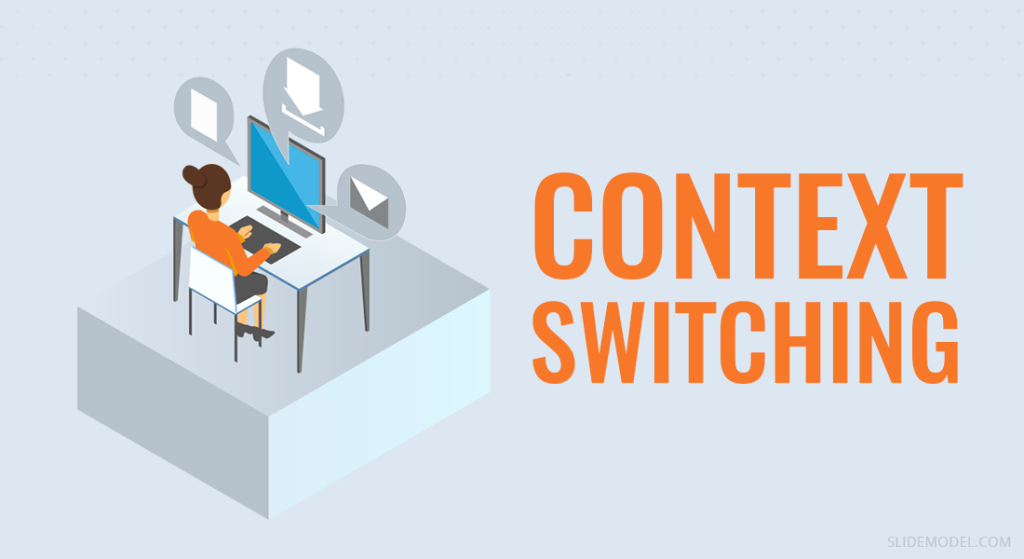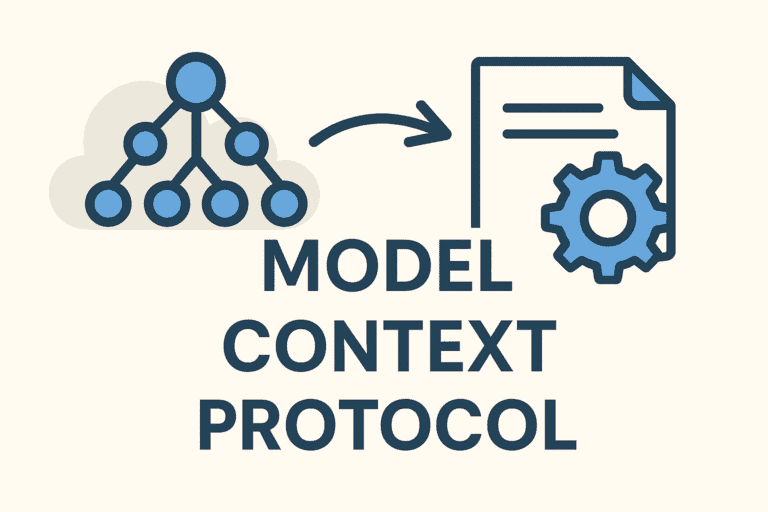In the world of project management, especially in software development and product delivery, the terms Agile and Scrum are often used interchangeably. However, they are not the same thing. Agile is a broad project management philosophy that emphasizes flexibility, collaboration, and customer-centric development. Scrum, on the other hand, is one of the most popular frameworks used to implement Agile principles.
Understanding the distinctions between Agile and Scrum is essential for teams and organizations that want to improve efficiency, adaptability, and customer satisfaction. In this guide, we’ll break down the fundamentals of Agile project management, explain how Scrum fits into the Agile world, and clarify the key differences between the two.
What Is Agile Project Management?
Agile project management is an iterative and flexible approach to planning and guiding project processes. Unlike traditional models that follow a strict, linear path, Agile focuses on incremental delivery, continuous feedback, and the ability to adapt to changing requirements throughout the project lifecycle.
Agile was initially developed to improve software development workflows, but its principles have since been adopted across various industries. It encourages cross-functional team collaboration, regular customer interaction, and working solutions over excessive documentation.
Key principles of Agile project management include:
Delivering working software frequently in short iterations
Embracing changing requirements, even late in development
Promoting daily collaboration between business and technical teams
Building projects around motivated individuals
Prioritizing face-to-face communication
Measuring progress through working software
Focusing on sustainable development practices
Agile is not a single methodology. Instead, it is an umbrella term for several frameworks and methods—including Scrum, Kanban, Extreme Programming (XP), and Lean—that follow the core values outlined in the Agile Manifesto.
How Do Agile Sprints Work?
In Agile project management—especially within frameworks like Scrum—a sprint is a short, time-boxed period during which a specific set of work is completed and made ready for review. Sprints are typically between 1 to 4 weeks long, and they allow teams to break down complex projects into manageable chunks of work.
Here’s how Agile sprints generally work:
Sprint Planning: The team collaborates to decide what work will be accomplished during the sprint. This work is selected from a prioritized product backlog.
Daily Standups (Scrum Meetings): Short daily meetings help team members share progress, identify roadblocks, and adjust their focus if needed.
Execution: Team members work collaboratively on tasks, focusing on the agreed-upon sprint goals.
Sprint Review: At the end of the sprint, the team demonstrates the completed work to stakeholders for feedback.
Sprint Retrospective: The team reflects on the sprint to discuss what went well, what didn’t, and how to improve in future sprints.
Sprints are a fundamental part of Agile because they support continuous improvement, frequent delivery, and faster feedback loops, helping teams stay aligned and responsive to change.
Why Is Agile Better Than Traditional Project Management Models Like the Waterfall Method?
Agile is often considered more effective than traditional models like Waterfall because it offers greater flexibility, faster delivery, and improved team collaboration. While Waterfall follows a linear, step-by-step approach—requirements, design, development, testing, and deployment—Agile encourages ongoing development and feedback throughout the project lifecycle.
Key advantages of Agile over Waterfall:
Flexibility: Agile allows changes to requirements even late in the project, while Waterfall resists change once the plan is finalized.
Faster Time to Market: Agile delivers usable features in short cycles (sprints), so value is delivered continuously rather than waiting until the end.
Customer Involvement: Agile involves stakeholders regularly, ensuring the product meets real needs. Waterfall often delays user feedback until the final stages.
Risk Reduction: Frequent testing and iterations reduce the risk of project failure and allow issues to be addressed early.
Team Empowerment: Agile promotes self-organizing teams and collaborative decision-making, unlike Waterfall’s top-down project control.
Agile’s adaptive approach makes it ideal for fast-paced industries where customer needs evolve quickly—something that rigid models like Waterfall struggle to accommodate.
What Is The Agile Manifesto?
The Agile Manifesto is a foundational document that outlines the core values and principles of Agile project management. Created in 2001 by a group of 17 software developers, the manifesto was born from a shared frustration with traditional, rigid development processes and a desire for more adaptive, human-centered approaches.
The Four Core Values of the Agile Manifesto:
Individuals and interactions over processes and tools
Working software over comprehensive documentation
Customer collaboration over contract negotiation
Responding to change over following a plan
These values emphasize flexibility, collaboration, and delivering value quickly. They don’t reject traditional project management elements but prioritize real-world effectiveness over bureaucracy.
The 12 Principles of Agile include:
Delivering valuable software early and continuously
Welcoming changing requirements
Frequent delivery of working solutions
Close cooperation between business and developers
Projects built around motivated individuals
Face-to-face communication as the most effective method
Working software as the primary measure of progress
Sustainable development pace
Continuous attention to technical excellence
Simplicity—the art of maximizing the amount of work not done—is essential
Self-organizing teams produce the best results
Regular reflection and adjustment by the team
The Agile Manifesto serves as a guiding philosophy, influencing various Agile frameworks like Scrum, Kanban, and Lean.
Is Agile Only for Software Development?
While Agile originated in the software development world, it is no longer confined to just that industry. Over the years, Agile has been successfully adopted by teams in marketing, education, product design, finance, HR, and even manufacturing.
Agile’s core principles—iterative delivery, responsiveness to change, and stakeholder collaboration—make it valuable in any environment where flexibility and speed are essential.
Examples of Agile beyond software:
Marketing teams use Agile to plan and execute campaigns iteratively, with room for feedback and course correction.
Product development teams apply Agile to prototype and test features based on customer insights.
Education programs use Agile to adapt curricula based on student performance and engagement.
HR departments implement Agile methods to improve hiring processes, onboarding, and employee engagement initiatives.
So, while Agile’s roots are in software, its broad adaptability makes it a powerful tool for managing complex work across many industries.
What Is Scrum Project Management?
Scrum is a lightweight, Agile-based framework designed to help teams develop, deliver, and sustain complex projects—especially software development—through collaboration, accountability, and iterative progress.
At its core, Scrum promotes empirical process control, which relies on transparency, inspection, and adaptation. Work is divided into short cycles called sprints, typically lasting 1–4 weeks, where a potentially shippable product increment is created.
Key roles in Scrum:
Product Owner: Defines the vision and manages the product backlog based on business needs and stakeholder input.
Scrum Master: Acts as a facilitator and coach, ensuring the team adheres to Scrum practices and removes any roadblocks.
Development Team: A cross-functional group that self-organizes to complete the sprint goals.
Core Scrum Events:
Sprint Planning
Daily Scrum (Standup)
Sprint Review
Sprint Retrospective
Scrum is highly structured but flexible in how it’s implemented, and it helps teams deliver value quickly while constantly improving both the product and the process.
What Is Meant by Scrum in Agile?
Scrum in Agile refers to one of the many frameworks used to implement Agile principles. While Agile is a broader philosophy, Scrum provides a concrete set of roles, practices, and ceremonies that help teams apply Agile in real-world projects.
Scrum brings Agile’s values—like collaboration, adaptability, and iterative delivery—to life through structured workflows:
Work is done in sprints for faster, focused delivery.
Teams rely on backlogs to prioritize features and user stories.
Regular events like daily standups and retrospectives keep teams aligned and continuously improving.
So, when someone says they are “using Scrum,” it means they are practicing Agile using Scrum’s defined methods.
Is Scrum Part of Agile?
Yes, Scrum is a part of Agile. It is one of the most widely used frameworks that align with Agile’s values and principles. Think of Agile as the mindset or philosophy, while Scrum is a tactical approach to putting that mindset into practice.
Relationship between Agile and Scrum:
Agile: A broad umbrella term for iterative, flexible project management methodologies.
Scrum: A specific method within that umbrella, offering clear guidelines on how to apply Agile values effectively.
Other Agile frameworks include Kanban, Extreme Programming (XP), and Lean, but Scrum remains the most popular due to its simplicity, adaptability, and proven success in fast-paced environments.
What Is the Difference Between Scrum and Kanban?
While both Scrum and Kanban are Agile frameworks, they differ in structure, roles, and how work is visualized and managed.
Key Differences:
| Feature | Scrum | Kanban |
|---|---|---|
| Structure | Time-boxed sprints (1–4 weeks) | Continuous flow with no defined iterations |
| Roles | Defined roles: Scrum Master, Product Owner, Development Team | No mandatory roles; teams self-manage |
| Workflow Visualization | Sprint Backlog used for each iteration | Kanban board with columns (e.g., To Do, In Progress, Done) |
| Commitment | Teams commit to a sprint goal | No sprint commitment; tasks flow continuously |
| Changes During Cycle | Changes not allowed mid-sprint | Changes can be made at any time |
| Metrics | Velocity, burndown chart | Lead time, cycle time, cumulative flow diagram |
Scrum is more structured and time-bound, ideal for projects that benefit from iterative delivery, while Kanban offers greater flexibility and is better suited for teams with continuously incoming tasks.
What Is the Difference Between Scrum and Sprint?
The terms Scrum and Sprint are closely related but not the same.
Scrum is the overall framework used to apply Agile principles in a structured way. It includes roles, ceremonies, and artifacts.
A Sprint is a time-boxed iteration within the Scrum framework, during which a specific goal or set of deliverables is achieved.
Key Differences:
| Aspect | Scrum | Sprint |
|---|---|---|
| Definition | A project management framework | A unit of time for focused work within Scrum |
| Function | Provides structure for Agile development | Organizes work into short, repeatable cycles |
| Contains | Roles, events, artifacts (like Product Backlog, Sprint Backlog) | Tasks selected from the backlog for delivery |
| Duration | Ongoing process framework | Typically 1–4 weeks long |
So, you use sprints within Scrum to deliver incremental value in a predictable rhythm.
What Is the Difference Between Agile and Scrum?
The main difference is that Agile is a mindset, while Scrum is a specific framework used to practice Agile.
Agile:
A philosophy based on values and principles from the Agile Manifesto
Encompasses multiple frameworks (Scrum, Kanban, XP, Lean, etc.)
Focuses on flexibility, customer collaboration, and iterative delivery
Scrum:
A framework used to implement Agile principles
Defined by roles (Scrum Master, Product Owner), artifacts, and ceremonies
Emphasizes short development cycles (sprints), regular feedback, and continuous improvement
In simple terms:
Agile = what you believe
Scrum = how you act on those beliefs
Scrum or Agile?
Choosing between Scrum and Agile isn’t exactly an either/or question—Scrum is a specific implementation of Agile, rather than a separate choice. However, understanding the nuances helps teams decide the best approach for their needs:
Agile is a broader philosophy—it’s about embracing flexibility, delivering iteratively, and prioritizing adaptability and feedback.
Scrum is one of the most popular frameworks grounded in Agile principles. It provides a defined structure through roles (Product Owner, Scrum Master, Development Team), ceremonies (like Sprint Planning and Daily Standups), and artifacts (Product Backlog, Sprint Backlog).
📌 When to go Scrum:
You want a disciplined framework with clear roles and time-boxed iterations.
You value routine ceremonies and structured retrospectives.
🚫 When to stay with Agile (but not Scrum):
Your context doesn’t need rigid structure—maybe you’re a small marketing team or a services team responding to varied client needs.
You prefer continuous flow models like Kanban, without the overhead of sprints and Scrum roles.
✅ You can even adopt a hybrid: follow Agile principles, start with Scrum, then adjust by incorporating Kanban practices, or vice versa. The key is finding what fits your team’s dynamics and objectives.
Scrum or Agile?
Choosing between Scrum and Agile isn’t exactly an either/or question—Scrum is a specific implementation of Agile, rather than a separate choice. However, understanding the nuances helps teams decide the best approach for their needs:
Agile is a broader philosophy—it’s about embracing flexibility, delivering iteratively, and prioritizing adaptability and feedback.
Scrum is one of the most popular frameworks grounded in Agile principles. It provides a defined structure through roles (Product Owner, Scrum Master, Development Team), ceremonies (like Sprint Planning and Daily Standups), and artifacts (Product Backlog, Sprint Backlog).
📌 When to go Scrum:
You want a disciplined framework with clear roles and time-boxed iterations.
You value routine ceremonies and structured retrospectives.
🚫 When to stay with Agile (but not Scrum):
Your context doesn’t need rigid structure—maybe you’re a small marketing team or a services team responding to varied client needs.
You prefer continuous flow models like Kanban, without the overhead of sprints and Scrum roles.
✅ You can even adopt a hybrid: follow Agile principles, start with Scrum, then adjust by incorporating Kanban practices, or vice versa. The key is finding what fits your team’s dynamics and objectives.
What’s the Best Agile and Scrum Project Management Software?
When selecting software to support Agile or Scrum workflows, consider tools that offer:
Backlog management
Sprint planning, tracking, and reporting
Flexible boards (Kanban or Scrum)
Integrations (Slack, Git, CI/CD, CRM systems)
Analytics (burndown, velocity, cycle time)
Collaboration features (chat, document sharing)
Recommended Tools
Jira (Atlassian): The industry standard for Agile teams—supports full Scrum workflows, sprints, backlog management, and advanced reporting.
Asana: A user-friendly tool adaptable to Agile processes; ideal for non-technical teams .
ClickUp and monday.com: Highly customizable platforms praised for flexibility and extensive integrations.
Trello (Atlassian): A Kanban-origin tool effective for lightweight Agile workflows.
Spotlight: Corexta Project Management Software
Corexta offers a powerful all-in-one solution that blends Agile project management with CRM, HR, finance, and team collaboration capabilities—particularly well-suited to agencies and service-based companies.
🔹 Core Features:
Task management: Benefit from Kanban boards, Gantt-style charts, milestone tracking, and real-time project monitoring .
Client and contract handling: Centralized management of clients, proposals, invoices, and e-signatures.
Time, finance, HR integration: Track time, expenses, resources, attendance, payroll, and generate tailored reports—all within one platform.
Collaboration tools: Internal chat, live notifications, and integrations with Slack, Pusher, and OneSignal.
✅ Pros:
Users describe Corexta as a “game-changer” due to its seamless integration of project, client, and financial management.
Its real‑time tracking and unified interface enhance team productivity and operational transparency.
⚠️ Cons:
Some users note a learning curve, especially given the breadth of features .
Occasional requests for more top-tier customization and enhanced onboarding support .
Final Comparison Table
| Tool | Scrum Support | Agile/Kanban | Extra Features |
|---|---|---|---|
| Jira | ✅ Full support | ✅ Agile-compatible | Best for technical teams & reporting |
| Asana | ✅ Supported | ✅ Yes | Great UI for general teams |
| ClickUp / monday.com | ✅ Yes | ✅ Yes | Highly customizable & integratable |
| Trello | ⬜ Basic | ✅ Yes | Simple Kanban; less suited for full Scrum |
| Corexta | ✅ Agile/Kanban | ✅ Yes, with boards | Full agency suite: CRM, HR, finance |
✅ What’s Best for You?
Technical/development teams: Choose Jira for its deep Scrum functionality.
Non-technical teams: Asana or ClickUp offer great adaptability and ease-of-use.
Service agencies: Corexta stands out by integrating Agile project management with client, HR, and financial operations—all in one platform.










